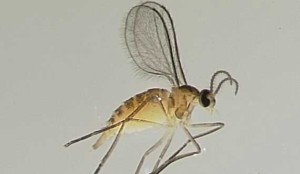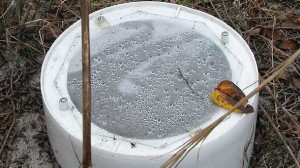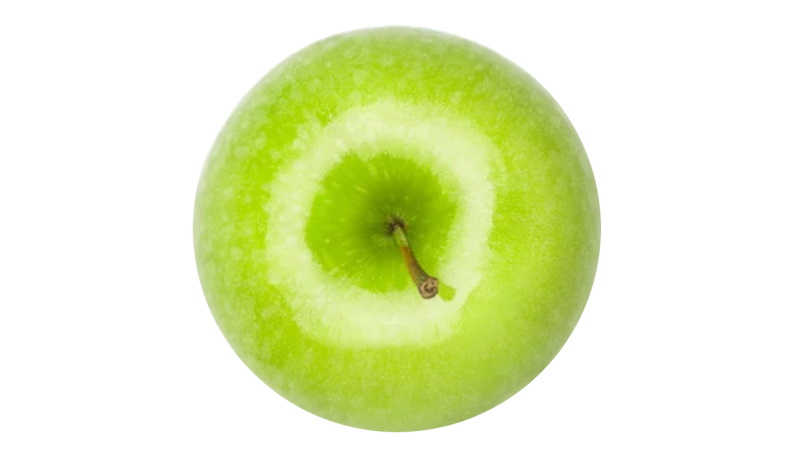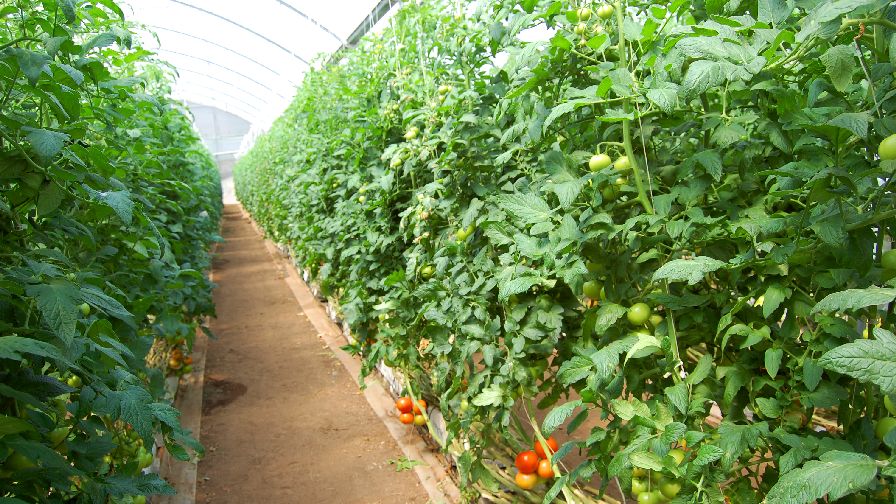Beat Blueberry Gall Midge

Photo by Oscar E. Liburd
Blueberry gall midge, Dasineura oxycoccana Johnson, is native to eastern North America and is a pest of cultivated blueberries throughout North America. Adult females lay their eggs in developing leaf and flower buds. Developing larvae feed on bud tissues. Injury to leaf buds can lead to yield reductions in the following season while injury to flower buds can cause up to 80% yield loss in rabbiteye blueberry (Vaccinium virgatum Aiton) plantings.
Specific symptoms of infestation in flower buds resemble frost damage and premature bud abortion can occur. Symptoms of leaf bud infestations include leaf curl, stunted growth, and blackened leaf tip. Blueberry gall midge adults resemble tiny mosquitoes and are roughly three millimeters in length.

Photo by Craig Roubos
Females lay eggs in buds after the buds have swollen and the scales on the buds have begun to separate. Larvae hatch within a few days. Once they have reached maturity, larvae drop, burrow into the soil, and pupate. Several generations can occur in a growing season. In rabbiteye plantings in Florida, there are usually two peaks in midge population, one in flower buds earlier in the season and the other in leaf buds later in the season. Gall midges overwinter as pupa in the soil.
Watch And Learn
There are two monitoring techniques for blueberry gall midge: bud samples and trapping. To sample buds, swollen buds with scales beginning to separate are collected and placed in a bag at room temperature. Larvae will emerge starting three to four days after bud collection. The two issues with this sampling method are that it is destructive and midge larvae are already present in buds.

Photo by Elena Rhodes
Traps can be used to monitor for adult midge emergence. A bucket emergence trap prevents midge adults emerging from the soil from mating and laying eggs. The trap consists of the bottom half of a five-gallon bucket with a hole cut into the bottom overturned and placed on the soil. The hole in the bottom of the bucket is covered by a sticky, transparent sheet that can be removed and replaced periodically with a clean sheet. Weekly monitoring is advised.
Panel traps, which consist of a 1 foot x 1 foot sticky panel attached to a wooden stake, also can be used to detect midge adults. Stakes should be cut so that the bottom of the panel is at approximately half of the bush height. The sticky side of the panel faces the bush. Panel traps performed well in Canada, but did not do well in Florida when midge populations were low.
A clear sticky sheet that can be hung from a blueberry bush like sticky cards is currently under investigation. Preliminary results suggest that the sheets are at least as effective as panel traps. Like the panel traps, the sticky sheets are 1 foot x 1 foot in size.
Management Methods
Insecticide applications must be timed to kill adults before they lay eggs in buds as few insecticides can penetrate the buds to kill larvae. Malathion, Diazinon, Delegate (spinetoram, Dow AgroSciences), and neonicotinoids (imidacloprid and acetamiprid) have performed well in suppressing gall midge populations.
In North America, there are several species of parasitoid wasps that can kill up to 40% of gall midge larvae in a blueberry planting. These include species in several genera in the families Platygastridae and Eulophidae. In Florida, the Platygastrids are common earlier in the season when flower buds are present.










